Ramadan stands as the most sacred month in the Islamic calendar, holding profound significance for Muslims across the world. This month of Ramadan stands as the core foundation of Islamic faith since it combines historical significance with spiritual importance above fasting rituals. Ramadan marks the time when the holy book of Islam, the Quran, was first revealed to Prophet Muhammad, establishing a direct connection between believers and divine guidance. Through continuous observance spanning fourteen centuries Muslims maintain a standard practice of celebrating this ninth month during Islamic lunar months.
The spiritual practices associated with Ramadan—fasting from dawn until sunset, increased prayer, charity, and self-reflection—all connect back to its historical origins and the revelation of the Quran. As Muslims worldwide anticipate the sighting of the new crescent moon that signals the beginning of Ramadan, they prepare to commemorate this significant historical event through their devotional practices. This time of heightened spirituality serves as a reminder of Islam’s historical foundations and offers an opportunity for Muslims to strengthen their connection with their faith’s origins. Through understanding the historical significance of Ramadan, one gains insight into not just religious practices but the very core of Islamic beliefs and values that have guided the faithful for centuries.
The Etymology and Pre-Islamic Roots of Ramadan
The word “Ramadan” carries its own historical significance, deriving from the Arabic root “R-M-Ḍ” (ر-م-ض) which means “scorching heat” or “burning.” This etymology reflects the original positioning of Ramadan in the ancient Arabian calendar during the hot summer months. The classical Arabic verb “ramiḍa” (رَمِضَ) means “to become intensely hot, become burning, become scorching, be blazing, or be glowing.” This name was established long before the advent of Islam, as Ramadan formed part of the pre-Islamic Arab calendar well before the religion came to Mecca in the seventh century.
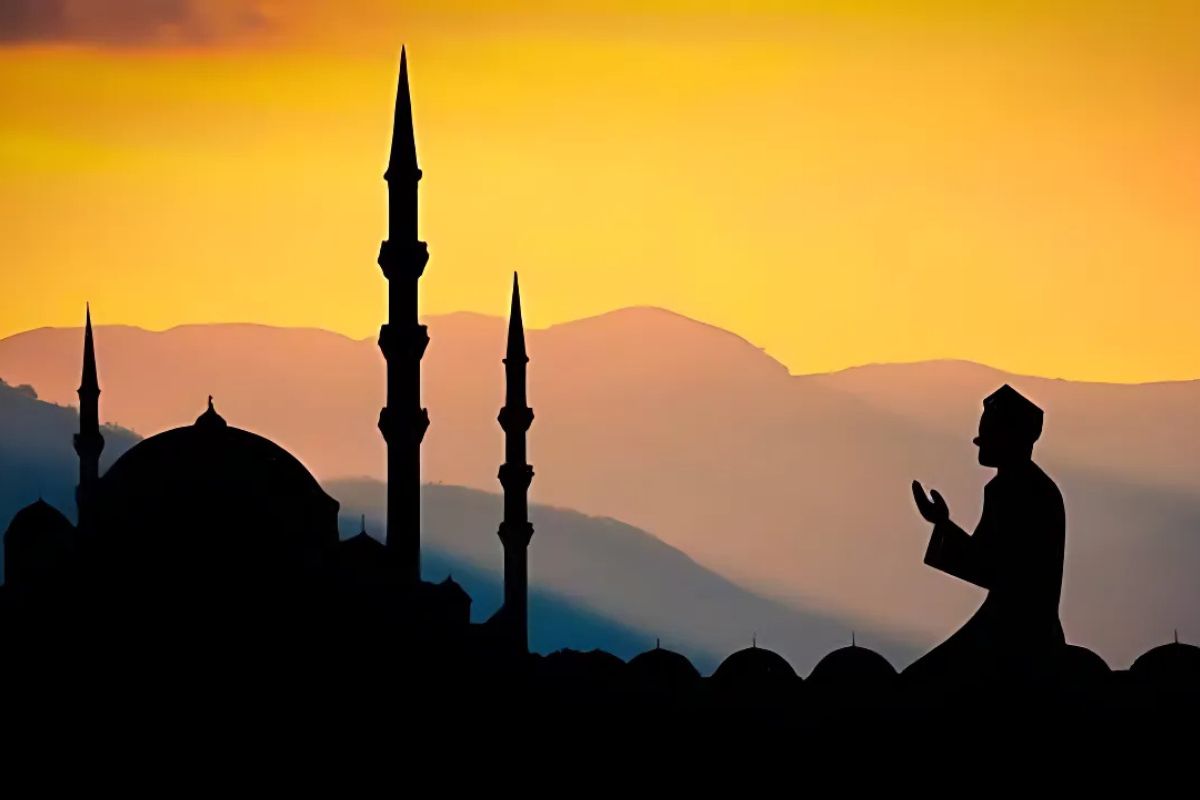
In regions with historical Persian influence like Afghanistan, Iran, Pakistan, India, and Turkey, variations such as “Ramazan” or “Ramzan” are commonly used due to differences in pronunciation of the Arabic letter “Ḍād.” Some Muslims consider it necessary to say “month of Ramadan” rather than just “Ramadan” alone, reflecting a tradition that views Ramadan as one of the names of God in Islam, though scholars debate the authenticity of this requirement.
Islam did not create the idea of fasting because this practice was well known among the pre-Islamic Arab people. The Quran acknowledges this continuity by stating: “You who believe, fasting is prescribed for you, as it was prescribed for those before you, so that you may be mindful of God.” The pagans of Mecca participated in fasting on the tenth day of Muharram as an ancient tradition to seek forgiveness from their sins and prevent drought according to historic documents.
Some scholars, including Philip Jenkins, have suggested connections between Ramadan fasting and “the strict Lenten discipline of the Syrian Churches,” though this connection remains a subject of academic debate. What is certain is that Ramadan held significance in the Arabian Peninsula even before it became central to Islamic practice, showing how Islam incorporated and transformed existing cultural elements into its religious framework.
The Establishment of Ramadan in Early Islam
The formalization of Ramadan as a month of obligatory fasting came in the second year of Hijra (624 CE), approximately two years after Prophet Muhammad’s migration from Mecca to Medina. This marked the point when fasting during Ramadan became officially established as one of the Five Pillars of Islam—the fundamental religious duties that form the foundation of Muslim life.
The first observance of Ramadan in Islamic context took place in Medina during a period of intense heat, which reflected the meaning behind its name. This historical moment solidified Ramadan’s position as not just a continuation of pre-Islamic practices but as something distinctly Islamic with specific religious objectives and spiritual dimensions. Muslims needed to abstain from food and physical needs while fasting during daylight hours for all month days as an essential Muslim devotion practice.

The integration of Ramadan into the Islamic faith was comprehensive, establishing it as more than a period of abstinence but as a time of heightened spiritual awareness, community solidarity, and religious devotion. The Quran describes the purpose of fasting as a means to attain “taqwa” (God-consciousness or piety). This transformative approach to Ramadan distinguished it from earlier fasting traditions by connecting the physical discipline directly to spiritual growth and divine revelation. The Prophet Muhammad emphasized the spiritual significance of Ramadan by increasing his own devotional practices during this month, setting an example for the Muslim community.
The First Revelation and Mount Hira
The most significant historical event associated with Ramadan occurred in 610 AD when Prophet Muhammad received the first revelation of the Quran through the Angel Gabriel (Jibril). Muhammad sought spiritual contemplation while staying in a cave on Mount Hira where he was situated outside Mecca to conduct his religious pursuit. The first verses of what developed into the Quran were transmitted to him while he spent time in this cave isolated from everyday life.
Muhammad started his prophetic mission when he received his first divine revelation which established Islam as a new religion. The first words revealed were “Iqra” (Read), beginning the passage that would later form the opening of Surah Al-Alaq: “Read in the name of your Lord who created man from a clinging form. Read! God is the Surpassing Generous Teacher who revealed knowledge through writing and bestowed knowledge upon mankind which he previously lacked. Muhammad fled home trembling after his initial revelation because his wife Khadijah provided him comforting support when she became his first follower.
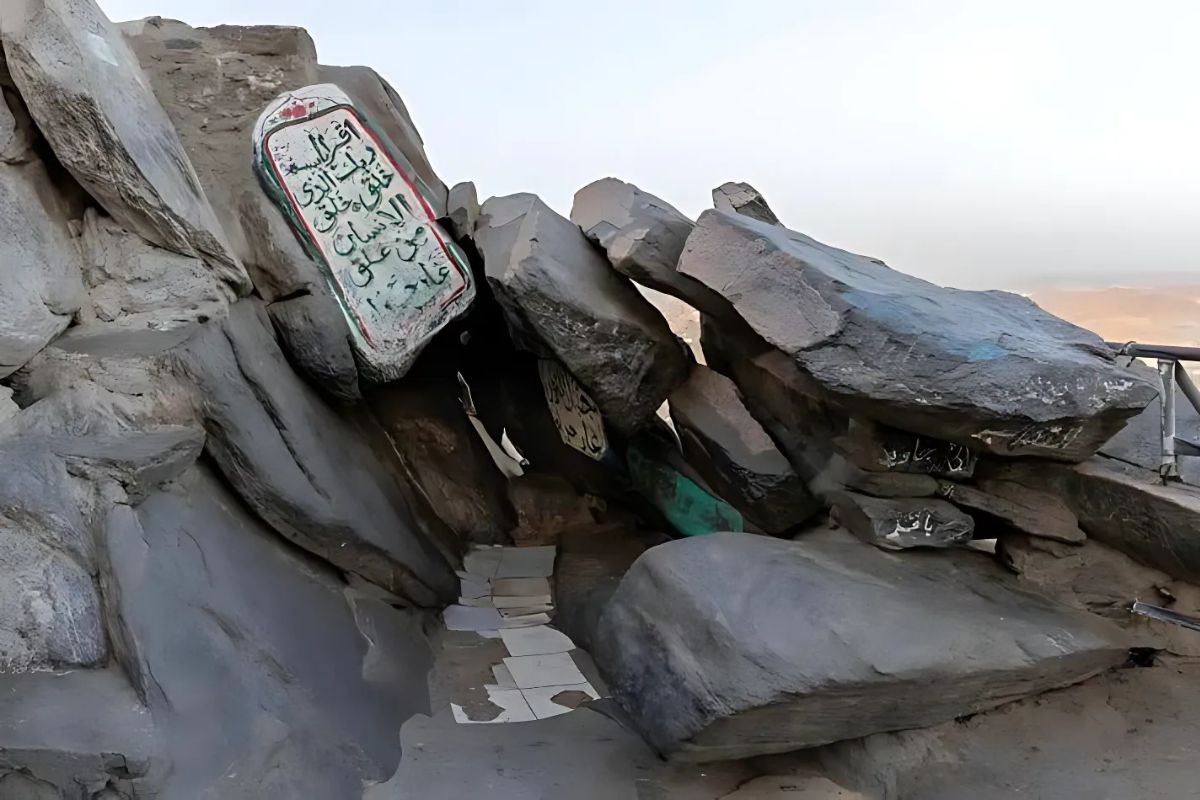
The isolated cave setting on top of a mountain holds deep meaning in Islamic mystical writings. Religious individuals used Mount Hira to achieve spiritual growth and avoid the pagan beliefs of Meccan culture.
The religious site at the cave had a special environment for transmitting divine messages beyond secular disturbances. Muslims believe that this first revelation during Ramadan established a direct connection between this month and divine guidance, making it especially sacred. Today Muslims consider the Mount Hira space a crucial site with historical significance yet they do not need to make visits to this location as part of their religious duties. The major event in the Hira cave reshaped Muhammad’s existence as well as launched a worldwide religious tradition which altered human history through multiple centuries. The solitary experience on Mount Hira during Ramadan connects the month permanently with divine revelation and spiritual transformation in Islamic consciousness.
Laylat al-Qadr: The Night of Power
Within the month of Ramadan, one night stands above all others in significance: Laylat al-Qadr, commonly translated as “The Night of Power” or “The Night of Decree.” Muslims commemorate the time with precision when Prophet Muhammad received the initial Quranic revelation on this night. The Quran itself speaks of this night’s extraordinary status in Surah Al-Qadr (Chapter 97): “We have revealed it (Quran) in the night of power. You must know which night the night of power actually represents. The Night of Power is superior to devotion done through a thousand months combined.
The Quran reveals that one night exceeds 83 years of divine worship while transcending all other nights in Islamic tradition. While the exact date of Laylat al-Qadr is not specified in the Quran, Islamic tradition generally places it among the odd-numbered nights of the last ten days of Ramadan, with many Muslims believing it falls on the 27th night. The Dawoodi Bohra community specifically identifies it as the twenty-third night of Ramadan, showing some variation in understanding across different Islamic traditions.
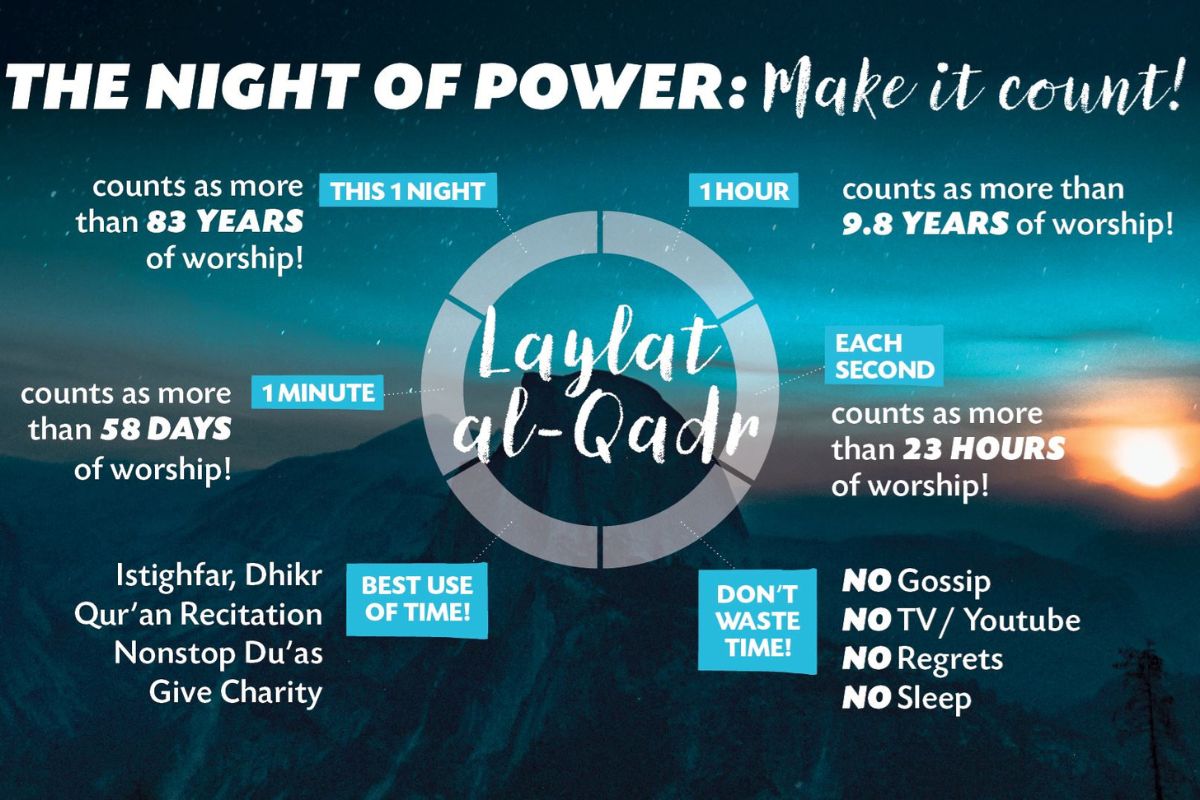
Muslims worldwide dedicate special attention to worship during the last ten days of Ramadan in hopes of experiencing the blessings of Laylat al-Qadr. During these days many devout Muslims engage in i’tikaf which requires them to spend their time inside mosques where they continuously pray while reciting the Quran. Many believe the night possesses unique features because a serene calm spreads across the world along with reports that prayers made that night gain superior acceptance from God.
Muslims who spend the night in prayer claim to observe various unusual phenomena such as unusual serenity and special lighting effects as well as unique atmospheric patterns although these occurrences are not documented in authenticated religious texts. On every annual occasion Muslims consider this night to be a moment where God establishes the future fate of humanity since He began setting yearly cosmic plans from that inaugural night. According to Islamic beliefs Laylat al-Qadr functions simultaneously as a historic commemoration and a continuous cosmic event in which divine regulations are established thus making this night a prime time for devoted Muslim prayer.
The Revelation of the Holy Quran During Ramadan
While the first revelation of the Quran occurred during Ramadan in 610 AD, the complete revelation of the Islamic holy book spanned approximately 23 years until shortly before Prophet Muhammad’s death in 632 AD. Divine guidance emerged gradually so the Muslim community could remember and put into practice the revelations while they received them. The Quran itself confirms its connection to Ramadan in Surah Al-Baqarah (2:185): “Ramadan is the month on which the Quran was revealed as a guide for humanity with clear proofs of guidance and the standard to distinguish between right and wrong.”
This verse establishes Ramadan’s special status as the month of revelation and connects the practice of fasting directly to commemorating and honoring this divine gift. The gradual revelation provided the Quran opportunity to respond to immediate concerns of the early Muslim community so it could offer relevant guidance that directly aligned with their current situations.

Muslims hold that the Quran was first preserved in al-Lawh al-Mahfuz (the Preserved Tablet) in heaven before being sent down to the lowest heaven during Ramadan, from where Angel Gabriel gradually revealed portions to Muhammad over the 23-year period. According to this religious belief the scripture originated in heavenly divine hands while maintaining divine maintenance. Interestingly, Islamic tradition teaches that not only the Quran but all divine scriptures—the scrolls of Abraham, Torah, Psalms, and Gospel—were revealed during Ramadan, further cementing this month’s significance as a time of divine communication and guidance. The Quran divides its 114 chapters among its audience as the exact written words of God according to Muslim belief.
The Quran brought forth the essential beliefs of Islam together with teachings about monotheism plus moral values and ethical instruction and stories about previous prophets and descriptions of life after death and guidelines that direct personal conduct alongside social interactions. During Ramadan, Muslims worldwide increase their recitation and study of the Quran, seeking to connect with the text that was first revealed during this month. Many strive to complete at least one full reading of the Quran during the month, maintaining a tradition that connects them directly to the historical significance of Ramadan as the month of revelation.
The Evolution of Ramadan Observance Through Centuries
Over fourteen centuries, the observance of Ramadan has maintained its core religious significance while adapting to diverse cultural contexts across the expanding Muslim world. Since the time of Prophet Muhammad the essential religious components including fasting during daylight hours coupled with additional prayers and charity along with Quranic recitation have permanently stayed in place. The religious devotion remains untouched while different Muslim cultures have developed diverse ceremonial expressions which preserve their spiritual core.
In the early days of Islam, Ramadan observances were relatively simple, focused primarily on the physical fast and additional prayers. The Islamic expansion throughout different geographical territories from North Africa to Southeast Asia brought about the assimilation of local customs into Muslim practices for celebrating and greeting Ramadan. Regional foods for breaking the fast (iftar), distinctive decorations, and particular prayers or ceremonies became part of the cultural fabric of Ramadan observance, creating a beautiful diversity within the unity of faith.
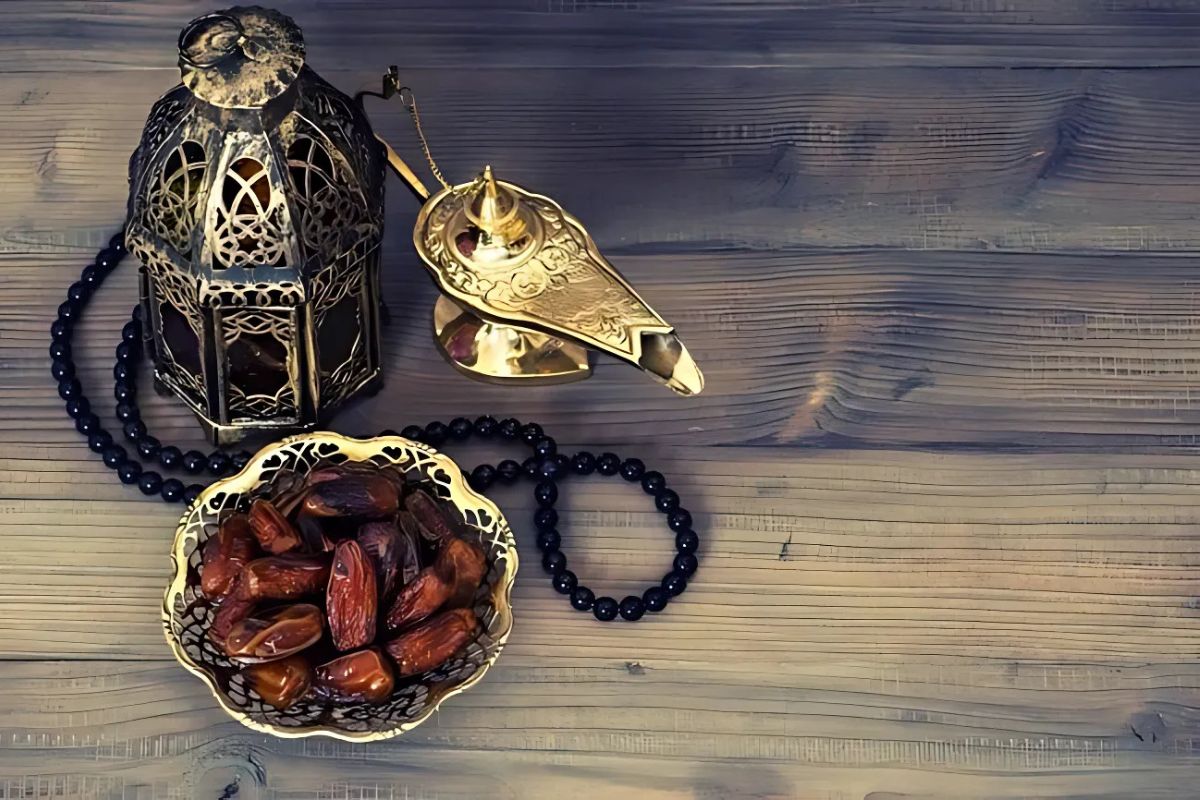
The Islamic calendar follows lunar cycles, which means Ramadan shifts backward through the solar calendar by approximately ten days each year, completing a full cycle every 33 years. This cyclical movement means that Muslims experience Ramadan through all seasons—sometimes fasting during long, hot summer days and other times during shorter, cooler winter days. This changing seasonal context has influenced how Ramadan is observed in different regions and eras. Historical records show that medieval Muslim societies developed elaborate traditions around Ramadan, including the lighting of mosques, special public announcements of the beginning and end of the fast, and royal ceremonies. The Mamluk Sultanate in Egypt initiated the cannon signaling the fast-breaking tradition which persists in certain countries at present.
In modern times, technological advances have influenced Ramadan practices, with mobile apps providing prayer times, online platforms facilitating Islamic education during the month, and social media connecting the global Muslim community in shared celebration. Despite these evolutions, the spiritual heart of Ramadan remains constant—a time for increased devotion, self-discipline, and connection with Islamic history and faith.
The Global Significance of Ramadan in Contemporary Times
Today, nearly a quarter of the world’s population observes or marks Ramadan, making it one of the most widely observed religious periods globally. In the contemporary world, Ramadan continues to hold profound significance that extends beyond personal spiritual practice to influence social cohesion, charitable activities, and cultural expression. During this month Muslims from different regions shift into common practices which develops worldwide unity based on the idea of ummah.
In many Muslim-majority countries, daily rhythms shift during Ramadan, with working hours often adjusted to accommodate fasting, and nighttime coming alive with special prayers (taraweeh), social gatherings, and festive meals. Throughout entire nations this unique religious element develops its own distinctive mood which goes beyond the boundaries of Muslim population. Even in countries where Muslims are minorities, Ramadan has gained increasing recognition, with non-Muslims becoming more aware of their neighbors’ practices and many institutions making accommodations for those who are fasting.
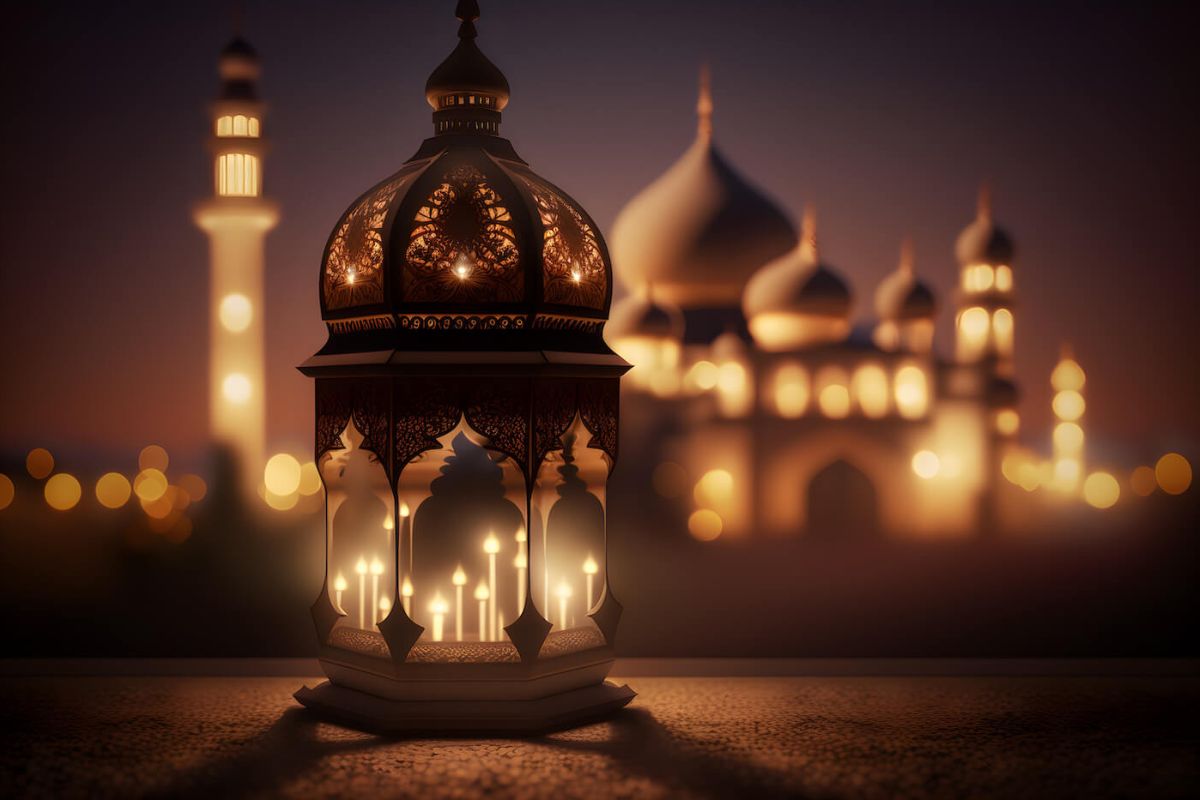
The spiritual values emphasized during Ramadan have particular relevance in modern times. Observing daily fasting enables people to develop mindfulness and restraint and recognition for what they have as it builds defenses against our current culture which promotes instant gratification. The emphasis on charity during Ramadan addresses issues of global inequality, with millions of dollars donated to humanitarian causes during this month.
Many Muslims see Ramadan as an opportunity to combat materialism and reconnect with essential human and spiritual values. The final celebration of the month is Eid al-Fitr which unites families as well as entire communities in shared happiness and thankfulness. Such discipline and celebration patterns create a balanced path to spiritual development which remains popular with millions of Muslims throughout the world. Despite the challenges of observing Ramadan in modern, fast-paced societies, particularly in non-Muslim contexts, the month continues to provide a meaningful spiritual anchor that connects contemporary Muslims with the historical roots of their faith and the first revelation of the Quran over fourteen centuries ago.
Conclusion: The Enduring Legacy of Ramadan
The historical significance of Ramadan extends far beyond its religious practices, representing a living link between contemporary Muslims and the foundational moments of their faith. Each Ramadan, when Muslims around the world sight the crescent moon and begin their month of fasting, they participate in a tradition that connects them directly to the Prophet Muhammad’s experience on Mount Hira and the first revelation of the Quran over fourteen centuries ago. Through continuous practice Muslims maintain a dynamic connection which eliminates historical time distances so that present followers feel directly linked to the beginnings of their faith.
The revelation of the Quran during Ramadan established this month as a sacred time—a period when the veil between the divine and human realms becomes thinner, facilitating deeper spiritual connection and enlightenment. This historical foundation continues to infuse Ramadan with profound meaning for Muslims worldwide, making it not just a religious obligation but a deeply personal spiritual journey.
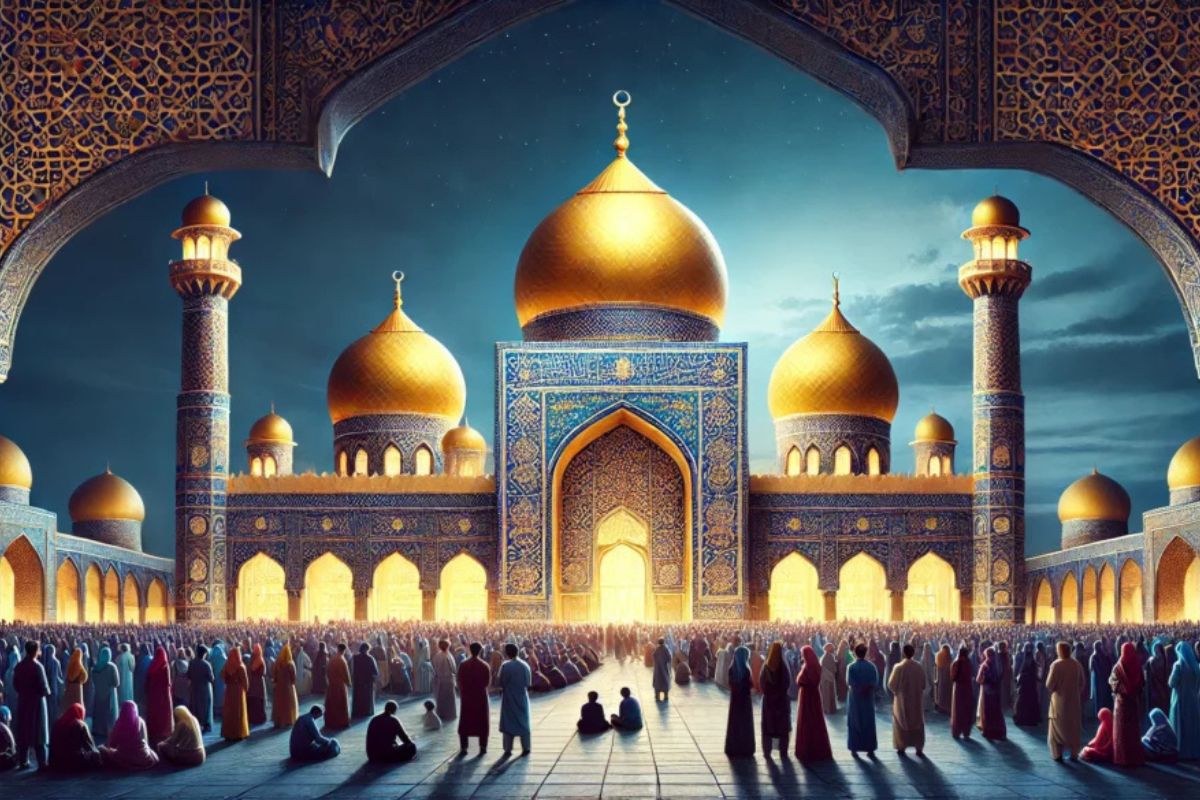
As Islam continues to grow and adapt to an ever-changing world, Ramadan remains a constant anchor, providing spiritual stability and communal solidarity through its consistent observance. The practices of Ramadan—fasting, prayer, charity, and Quranic recitation—serve as practical embodiments of Islamic principles that help believers maintain their spiritual focus in diverse circumstances. The historical event of the Quran’s revelation during this month ensures that Ramadan will always remain central to Islamic faith, regardless of how other aspects of religious expression might evolve over time.
For Muslims, understanding the historical significance of Ramadan enriches their experience of the month, transforming routine religious obligations into meaningful commemorations of their faith’s divine origins. In this way, history and spirituality intertwine during Ramadan, creating a holistic religious experience that has sustained Muslim faith for generations and will likely continue to do so far into the future.
Also Read: The Diverse and Unique Art Forms of Bengal
You can connect with DNN24 on Facebook, Twitter, and Instagram and subscribe to our YouTube channel.

